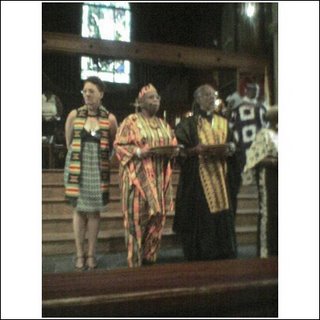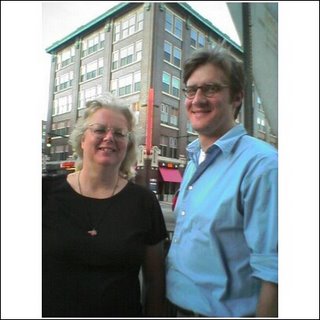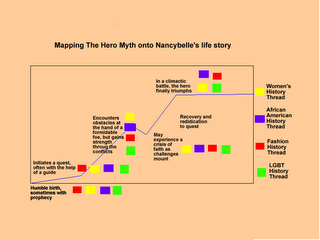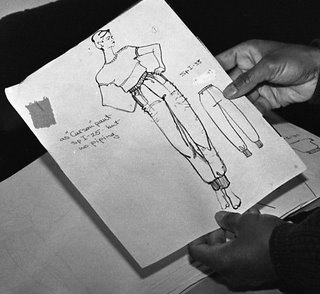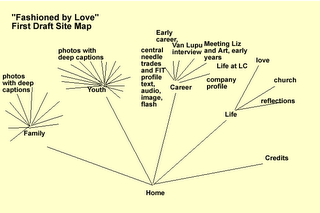[This thinkpiece is from 2003.]
In all of the research, debate and analysis surrounding affirmative action, I have become convinced that we are missing a golden opportunity to be more innovative in our thinking about ways of achieving educational equality. I believe that if we analyze some of the voluminous data we have using emerging tools in networking science, interactive multimedia and social psychology, we can create effective new models for teaching, mentoring and advising students and young professionals from non-traditional backgrounds.
I write this essay to suggest how these tools might be created, and how they might be applied in ways that are less contentious than our current arguments about fairness and distributive justice. In advancing this proposal, I do not mean to suggest that such arguments are not important or necessary – because they are. I do suggest however, that if we are sincere about wanting to see each child achieve his or her full potential, science and history may be able to offer us a way we are not currently considering. And conceptually, at least, it isn’t that complicated.
A final disclaimer before I disclose my idea: I am neither a scientist nor a trained historian. I come to this conversation as an Affirmative Action baby with a quarter century of professional experience as a writer and teacher in the fields of public relations, magazine writing and interactive multimedia. This idea emerged from reflecting on that polyglot experience, and on those of my forbears, as I read Columbia University sociology professor Duncan Watts’ book, Six Degrees: The Science of a Connected Age (Norton, 2003).
Watts’ book describes an emerging body of theory of how disparate phenomena are affected by their internal and external connections – whether the phenomenon under study is computer viruses, power outages, or political activism. It turns out that I am one of the thousands of e-mail users who have participated in Watts’ internet-based Small World project, which tries to ascertain whether there really are only six degrees of separation between two randomly selected individuals. In the Six Degrees project, volunteers are given the name of a “target” individual and told to get as close to that person as they can by sending an e-mail to someone they know. About two years ago, I got an e-mail from a former student asking me to help establish a connection to a person who worked at Bloomberg LP. I didn’t know the target person, but I know lots of people at Bloomberg, so I picked one of them and passed the e-mail along. Simple idea.
As Watts discloses in his book, the data from this simple experiment gives rise to some powerful and sophisticated mathematical models that, like chaos theory, can be applied quite broadly. He suggests that these models can eventually be used to predict the outcome of elections, or suggest effective job-hunting strategies or to understand and defuse terrorists’ cells. It occurs to me that we can also use these modeling techniques to understand how structures of educational opportunity are created and most effectively deployed.
The first case study that came to mind from which hypothetical models could be developed and tested was the education of pioneering African American intellectual William Edward Burghardt Du Bois (1868-1963). Du Bois grew up in a predominantly white, politically liberal New England town, and the town's leading citizens funded his undergraduate education at Fisk. His academic performance at Fisk earned him the attention of the people who became his benefactors at Harvard, and that placed him in the position to learn about the fellowship that would ultimately make it possible to attend the University of Berlin.
It seems to me that we ought to be able to model Du Bois' educational trajectory as a series of small network problems. The first step would be to look at the likelihood that a poor colored boy would get a scholarship to Fisk. The second would be the leap from Fisk to Harvard, then Harvard to Berlin. Modeling these steps seems to me to be relatively simple because the numbers of people involved are small
If all of this works, it might provide a way of mapping an individual's structures of opportunity, and of conceiving strategies for maximizing the optimal use of such small networks. I suspect that this would be a rather difficult thing to model. This is the second part of what I was thinking about. The networks that supported Du Bois were, in some cases generated, you might say, activated, by stories. By this I mean that the town fathers of Great Barrington had certain beliefs about themselves, a common story that formed part of the basis of their working relationship. Descended from one of great Barrington’s old black families, Du Bois presented himself in a way that fit their story about themselves as former abolitionists.
The storytelling part of the network building becomes particularly important when Du Bois tries to get his fellowship to go to Berlin. Rutherford B. Hayes, by then a
former President, headed a foundation that was supposed to support black students who were pursuing advanced degrees. He gave a speech saying that they hadn't found anyone to give the money to. Du Bois heard about what Hayes was saying, and wrote Hayes a letter saying, essentially: Hey, I'm here, and so are several other colored Harvard men, why haven't we been given a chance to apply? Ultimately, because Du Bois was supported by such people as William James, he got to apply, and he got the fellowship. Du Bois’ network enabled him to make Hayes act in a way that's consistent with his story.
It seems to me that Du Bois' experience is similar to what happens to students who are successful beneficiaries of affirmative action. Much of the value of my Princeton experience is related to the small networks I have been able to join. I would submit that our access to those networks has been mediated by the stories that govern their internal behavior, the stories told about us as potential new entrants and, to a lesser extent, the stories we tell about ourselves. These stories don't exist by themselves, of course -- they are cultural products -- but I am focused on their function.
One of the ways in which stories may affect the functioning of networks of educational opportunity is in countering a phenomenon that Stanford University social psychologist Claude Steele calls “stereotype threat.” According to Steele, stereotype threat occurs when an individual feels as if he or she is being evaluated according to a stereotype. Although Steele asserts that anyone can be affected by stereotype threat, he has studied the phenomenon’s effects on middle-class African American college students and women students in scientific and technical fields. Steele’s research suggests that stereotype threat accounts for academic underperformance in well-prepared students with high self-esteem.
Let me illustrate how I think the right combination of stories and networks can create opportunities while subverting stereotype threat. About 20 years ago, I had the privilege of profiling a pioneering black engineer, Dr. Walter Lincoln Hawkins for Black Collegian magazine. “Linc” Hawkins was the first black scientist at Bell Labs. Even though he came of age during the Great Depression and in an era of virulent racism, Linc came from segregated Washington DC to graduate first, from the city’s fabled Dunbar High School, followed by an undergraduate degree from Renssalear Polytechnical Institute and a doctorate from Mc Gill University. At Bell Labs, he earned 14 patents, including one for the polymer that allows us to put telephone cables underground and at the bottom of the sea. He spent his retirement years working to create programs that help women and students of color become successful scientists and engineers.
Along the way, Linc admitted that he had encountered plenty of racism – lots of stereotype threat. He didn’t talk much about those kinds of experiences, but a few examples emerged from conversations with him and others. For example, when his mother trekked from Washington, D.C. to Canada to hear Linc defend his dissertation, she was initially barred from the meeting room because of her race. Other Bell Labs old-timers told me that Linc spent his first decade there without any lab assistants, because there were no black assistants available, his managers couldn’t envision him giving orders to a white male, and they thought that it would be unseemly for him to have a white woman working under him. Ultimately, he did get a white female assistant, but for many years, he had to wash his own test tubes and tend to his own supplies.
When I asked him about the key to his success, he credited the foundation that his high school had given him – not just academically, but psychologically and practically. First, it should be understood that in its heyday, Dunbar was an exceptional place. The segregated, selective public high school was staffed by some of the best-educated black people on the planet – including such Harlem Renaissance cognoscenti as Georgia Douglas Johnson, Angelina Grimke and Jessie Fauset. They were graduates of such schools as Cornell and the University of Pennsylvania, but Dunbar was one of the few teaching jobs available to them. However, the faculty’s high-toned backgrounds gave them connections that they used to steer students into and through the kinds of schools they, themselves, had attended.
Attending Dunbar at the height of the New Negro movement, Hawkins recalled being taught African history and African American literature, in addition to the traditional elite high school curriculum of that day. He particularly remembered a physics teacher he called Prof. Weatherless, who drove a new Reo car every year as a royalty for his participation in the invention of the starter. He said that he knew he could succeed at RPI, Mc Gill and Bell Labs because he knew his heritage, and he had living examples in front of him.
The lives such people as Du Bois and Hawkins are sufficiently well documented that one ought to be able to graph the ways in which these networks and stories worked for them. However, I have no idea how to go about it.
I have discussed elements of this idea with mathematicians and social scientists who tell me that it’s worth exploring, although there isn’t a neat existing structure through which to do it. So, I am sharing my idea with the world with the hope of finding the people who can take it as far as it deserves to go.

Labels: future implications, graph theory
